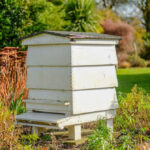Swiss cheese plants are eye-catching houseplants because of their heart-shaped leaves and plenty of natural holes. Their exotic appearance and low maintenance needs have made them a hot commodity. Did you know, though, that you may cultivate your own supply of these stunning flowers? The fascinating topic of Swiss Cheese Plant propagation is explored in this essay.
Understanding Swiss Cheese Plants
The tropical rainforests of Central America are the natural habitat of the Swiss Cheese Plant, or Monstera deliciosa. The term “Swiss cheese plant” comes from the peculiar holes and splits that appear in the mature leaves of these plants. One of the many marvels of these plants is not just their aesthetic appeal, but also their ease of reproduction. With time and attention, a single Swiss Cheese Plant can multiply into a lush, exotic addition to any room.
Propagation Through Stem Cuttings
Stem cuttings are a typical and successful method of propagating Swiss Cheese Plants. It’s so easy that even first-time plant parents can do it. Choose a strong stalk from your plant, one that has at least a few leaves and a node (a small bump on the stem). To remove a node, make a clean cut directly below it with a sharp knife or gardening shears. Leave a few inches of stem length below the node. Here is where the new roots will take hold and flourish.
Keep the node of your cutting submerged in clean water while keeping the leaves above the surface. Locate a comfortable position where the heat and light won’t be directly on your cutting. Small roots should begin growing out of the node within a few weeks. When the roots on your cutting are several inches long, you can plant it in potting soil. You’ve done an excellent job at propagating your Swiss Cheese Plant.
Propagation Through Air Layering
Air layering is a second, equally intriguing, way of dissemination. By using this method, the plant is stimulated to develop roots even while it is still tied to the parent. The procedure entails creating a shallow incision in the stem about a third of the way through, underneath a node. The wound is then covered in wet sphagnum moss and held open with a toothpick or a piece of wood. Seal the moss in plastic wrap using tape or a rubber band.
The moss will begin to root in a few weeks. Once the plant’s roots have established themselves, you can remove the old pot and put the cuttings directly into the soil. Although this approach involves a little more work, it’s a fascinating process to see and a fantastic way to add to your Swiss Cheese Plant collection.
Aftercare for Propagated Swiss Cheese Plants
If you want your new Swiss Cheese Plant to thrive after you’ve potted it, you’ll need to give it some special attention. It should be watered well, but not flooded; the top inch of soil should be allowed to dry out before further watering. Your plant will thrive in a room with bright, indirect light and a temperature between 65 and 85 degrees Fahrenheit. With tender loving care, your newly propagated plant will flourish into a beautiful centerpiece.
Conclusion
Expand your plant collection without paying a dollar by partaking in the gratifying process of propagating Swiss Cheese Plants by stem cuttings or air layering. You have the satisfaction of seeing something new emerge from nothing, and you learn more about this stunning plant. There’s no reason to hold off, then. Get your pruning shears ready, locate a node, and start your plant-growing journey!




